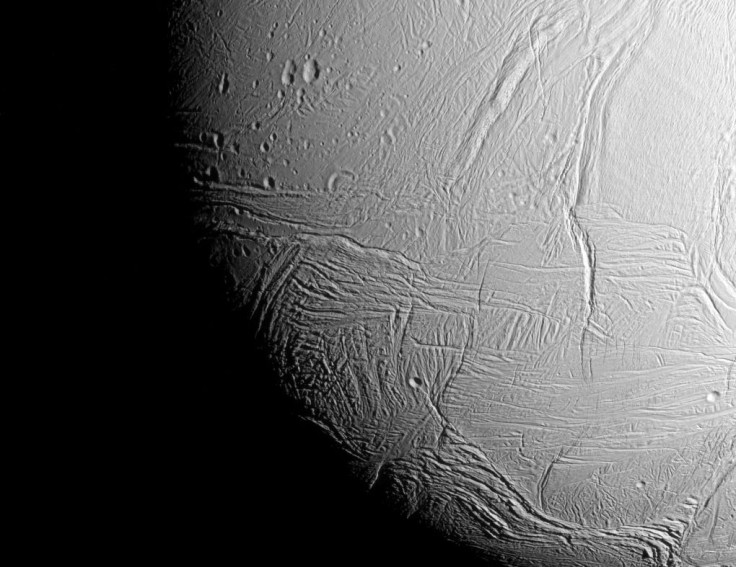Enceladus, Saturn’s Geyser Moon, Captured In ‘Dramatic’ Flyby Photos By Cassini

NASA's Cassini spacecraft has provided new images of Saturn’s icy, geologically active moon Enceladus, which is only 310 miles in diameter and is about a tenth of the size of Saturn’s largest moon, Titan. The images were taken during Cassini’s flyby Wednesday, in which the spacecraft passed about 30 miles above Enceladus’s south polar region.
Cassini is part of the Cassini-Huygens mission, which is a cooperative project of NASA, European Space Agency and the Italian Space Agency. The spacecraft, which is the fourth space probe to visit Saturn and the first to enter orbit, has been studying the planet and its natural satellites since arriving there in 2004. Scientists also expect Cassini to continue transmitting its data from the encounter for the next several days.
“Cassini's stunning images are providing us a quick look at Enceladus from this ultra-close flyby, but some of the most exciting science is yet to come,” Linda Spilker, the mission's project scientist at NASA's Jet Propulsion Laboratory in Pasadena, California, said in a statement.
According to NASA, data from Cassini's gas analyzer and dust detector instruments will soon be analyzed to better understand the composition of the global ocean beneath Enceladus' surface. Researchers also expect to get more insights about any hydrothermal activity occurring on the ocean floor.
“The potential for such activity in this small ocean world has made Enceladus a prime target for future exploration in search of habitable environments in the solar system beyond Earth,” NASA said.
The next and final close encounter of Enceladus by Cassini will take place on Dec. 19, when the spacecraft is expected to measure the amount of heat coming from the moon’s interior. The flyby will take place at an altitude of 3,106 miles.
Cassini obtained the closest views of the northern regions of Enceladus earlier this month, when the spacecraft took images while passing 1,142 miles above the moon’s surface.
Here’s an animation of the Cassini spacecraft during its Dec. 19 flyby of Enceladus:
© Copyright IBTimes 2025. All rights reserved.






















